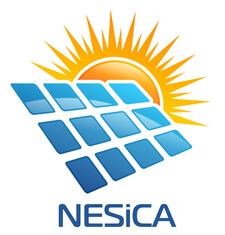
 |
| Applicant number: | A4 |
| Organisation name and acronym: | Technical University of Košice (TUKE) |
| Task distribution/identification of roles during the project implementation: | Technical University in Kosice (A4), coordinates implementation of activities in SK, provides pilot activities aimed at energy storage system; provides trainings in intelligent energy models development for communities. Each partner has its own tasks that contribute to the achievement of project results: A2 and A5 provide the development of energy monitoring outputs; A4 provides Energy storage and development of feasibility studies; A1 and A3 provide energy activities for communities. |
| Activity group 4: | Intervention logic: Installation of the renewable energy system in the swimming pool building in Uzhhorod National University. Preparation works. Announcement of the Tender Procedure and Procurement Rules implementation. Construction works. Indicators: Financing of the works and renewable energy system. Human resources and skilled experts. Sources and means of verification: Narrative and financial reports, information in Local media, newsletters and press-releases. Assumptions (What other conditions must exists?): Financing of the planned project activities; No big changes in tender procurement rules; No economic meltdown in the region in the next period; No exchange rate fluctuations. |
| Activity group 6: | Intervention logic: Project management and communication. Holding videoconference meetings and working meetings of project staff. Holding monitoring sessions and evaluation of the project results. Holding press-conferences and producing thematic films for project results promotion. Dissemination of the main publications: Energy Concept, feasibility studies, pressreleases and newsletters, booklets. Indicators: Financing of the planned activities: videoconferences costs, human resources and skilled experts with related competences and commitments. Sources and means of verification: 1. Registration lists of the project activities participants. 2. Number of visitors of the web-sites. 3. Project reports. 4. Press-releases. Assumptions (What other conditions must exists?): Financing ofthe planned project activities; No big changes in tender procurement rules; No economic meltdown in the region in the next period; No exchange rate fluctuations. |
| Operational capacity: Skills and expertise of key staff involved in the project: | |
| Name of staff member: | Summary of relevant skills and experience, including where relevant a list of recent publications related to the domain of the project. |
doc. Ing. Mária GAMCOVÁ, PhD.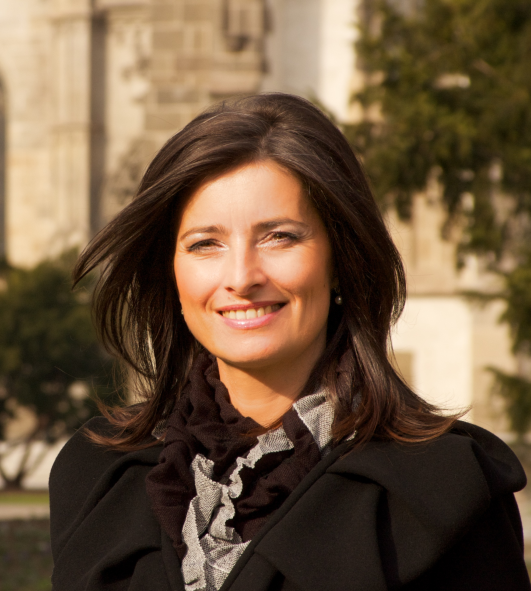
| Vice-Dean for the Faculty promotion and International Relationships at FEI TU of Košice. She deals with the signal processing, UWB radars, multimedia e-learning technologies. Her experience in managing of various research grant projects (KEGA, VEGA, APVV, and other) guarantees a successful process and completion of the project. She is author of more than 60 articles in various journals and conferences. |
doc. Ing. Dušan MEDVEĎ, PhD.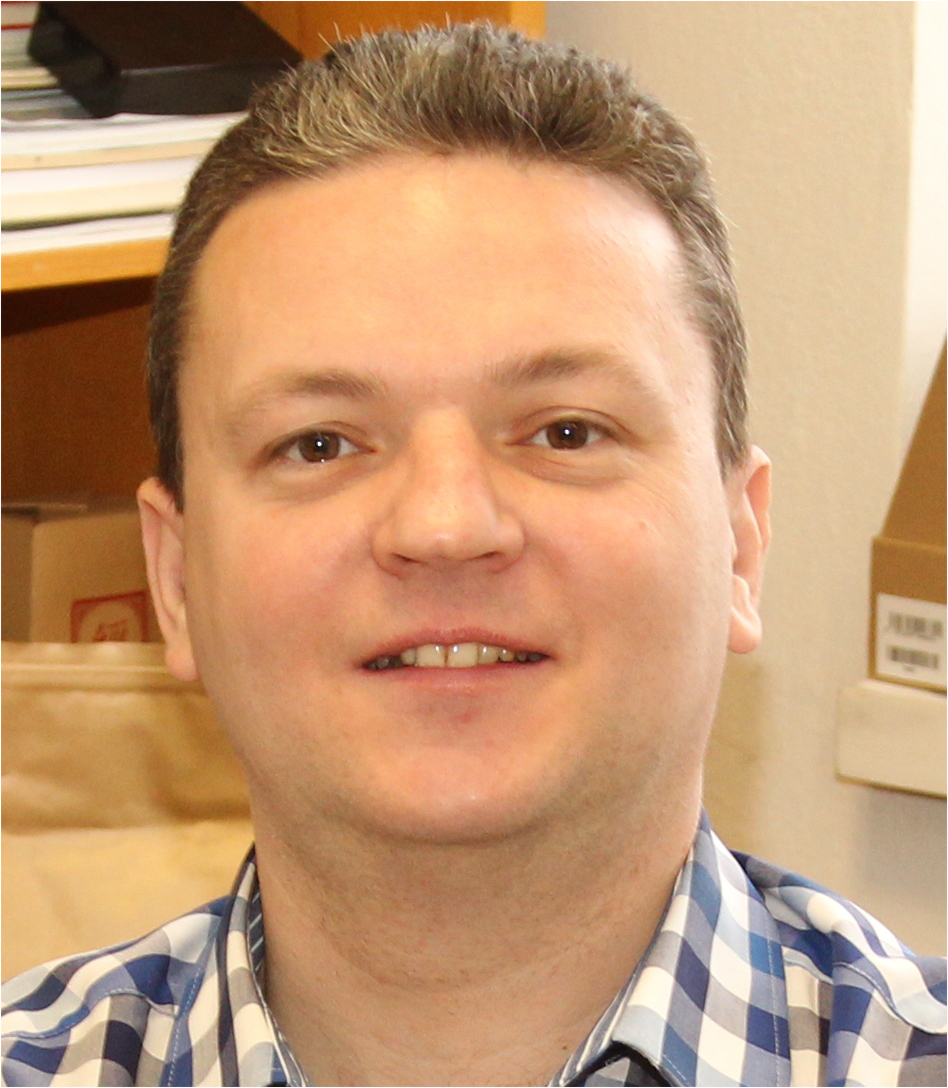
| Associate professor at Department of Electrical Power Engineering (EPE) at FEI TU Košice. In his professional and scientific activity he works in the field of computer modelling of temperature and electromagnetic fields by numerical methods and computer modelling of the elements of the power system. Within the project there will be used his experience in the field of smart-grid systems, computer modelling and knowledge of solution of fault conditions in the EPS. He is author of more than 200 articles in various journals and conferences. |
doc. Ing. Peter KAPALO, PhD.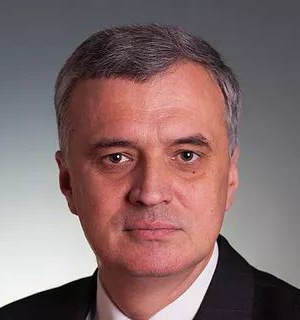
| Associate professor at Institute of Architectural Engineering at Technical University Košice Author /co-author of 430 publications (teaching materials, articles, conference proceedings, books). |
doc. Ing. František VRANAY, PhD.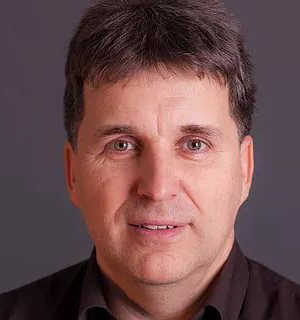
| Associate professor at Institute of Architectural Engineering at Technical University Košice Author /co-author of 195 publications (teaching materials, articles, conference proceedings, books). |
Ing. Marek KUŠNÍR, PhD.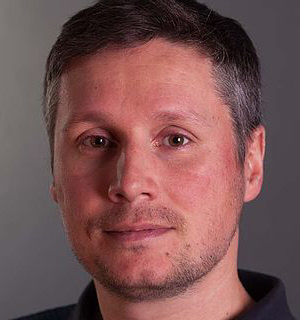
| Assistant professor at Laboratory of Architectural Engineering at Institute of Architectural Engineering at Technical University Košice Author / co-author of 85 publications (magazines, journals, books). Member of Slovak Electrotechnical Society. |
| Activity group 4 (AG4) - Infrastructure | Renewable energy system in UzhNU | |||||||||
| Responsible Applicant(s) | State University ‘Uzhhorod National University’ ("Uzhhorodskyi Natsionalnyi Universytet") | |||||||||
| Applicants’ involved | State University ‘Uzhhorod National University’ Ştefan cel Mare University of Suceava Non-Governmental Organization “European Initiatives Centre” Technical University of Košice | |||||||||
| Readiness for implementation and information on preliminary activities | Uzhhorod National University is ready to implement the project on the basis of the preliminary activities undertaken by the Applicant: feasibility study, technical documentation and other relevant documents already obtained and uploaded to the Project within the Additional Support documents. Regarding the ownership: UzhNU is the owner of the building and has related components to conduct reconstruction works in this building. Related documents: evidence of ownership provided in Additional Support documents to this project. Regarding the building permit: according to UA legislation the building permit is possible at the stage of tender procedure after the subcontractor is selected. This official information (clarification provided by Department of Architecture of Uzhhorod City) is also attached to the Additional Support documents. The estimate time for obtaining the building permit is up to 1 month after the closing the tender procurement. | |||||||||
| Description of the infrastructure(s) | Reconstruction of the heating system with the use of renewable energy sources will allow applying the solar radiation technology to provide the electric power of the sports complex building. The project for reconstruction is planned to be implemented in the existing building under exploitation, without a complete suspension of its use for functional purpose. The existing building is a three-story building covered with a flat roof. The walls are made of bricks.The roof covering is made of reinforced concrete slabs of overlap.The existing roof is ruberoid. The electrical supply of the object is carried out by the Transnational Private Joint Stock Company “Zakarpattiaoblenerho”. Heating of the premises of the pool, showers and locker rooms, as well as heating the water in the pool is carried out from the boiler house with the capacity of 360 kW.Heat loads are covered by steel boilers EKO TECHNOMASH installed in the boiler house (2 units with the capacity of 150 kW each). The preparation of hot water takes place in an accumulation-flow water boiler with the capacity of 60 kW. Reconstruction of the heating system with the use of renewable energy sources of the building involves the use of solar radiation technology to provide electricity to this building. Solar batteries are used as the devices converting solar radiation into electricity. Autonomous solar panels, arranged on the roof of the building, will be able to produce electricity the surplus of which will return to the power grid, or will be used for heating the water in the pool. The nature ofthe construction: reconstruction Duration years - before the major repairs 28400, 0 m3 - after the major repairs 28400, 0 m3 | |||||||||
| Location of the infrastructure | The reconstruction will be made in the building of the swimming pool of Uzhhorod National University with the address: 29 Mytna street, Uzhhorod, within the building where the Faculty of Health and Physical Education is located. http://www.uzhnu.edu.ua/uk/news/onovlenij-basejn-sportivno-ozdorovochgo.htm More than 700 students per 1 month visit different sport and rest-time studios that are located in the building and the swimming pool. A number of sport groups have swimming trainings there and daily use these capacities for trainings and rest. | |||||||||
| Other information | Full Feasibility Study and Technical documentation provided in the additional supporting documents. | |||||||||
| Detailed risk analysis and contingency plan | Physical risks and environmental risks include the possibilities of natural disasters that may change the plan of the project realization. Such risks may also include the risks related to the health issues of the participants, risks of accidents during the implementation of the project. The project does not contain the objects that can be destroyed as a result of the floods or any other environmental catastrophes. Physical risks are also connected with the long procurement period. To minimize this risk the expert support on procurement implementation is included into the budget of the LA (UzhNU). There are no political risks as the building owner is UzhNU and all decisions can be made by Leaders of UzhNU. | |||||||||
| Sustainability of the infrastructure component | Established renewable energy system in the swimming pool of UzhNU has the high level of sustainability based on the competence and obligations of the LA to serve this building and keep it in working conditions for swimming of students/teachers and inhabitants of Uzhhorod City and Zakarpatska oblast. Besides, the established Energy Laboratory and the trained staff in AG 1-3 will provide support in exploitation of the installed renewable energy system in the swimming pool. LA is the owner of the building according to provided documents in support documents to this project and has related competence and commitments to keep the system and provide high level of sustainability after the project completion. | |||||||||
| ||||||||||
| Project results |
|
| Activity group 6 (AG6) - Project Management and Communication | Management and Communication | ||||||||||||||||||
| Responsible Applicant(s) for project management | State University ‘Uzhhorod National University’ ("Uzhhorodskyi Natsionalnyi Universytet") | ||||||||||||||||||
| Responsible Applicant(s) for communication | Non-Governmental Organization “European Initiatives Centre” | ||||||||||||||||||
| Applicants’ involved | State University ‘Uzhhorod National University’ Self-Government of Szabolcs-Szatmar-Bereg County Ştefan cel Mare University of Suceava Non-Governmental Organization “European Initiatives Centre” Technical University of Košice University of Nyiregyhaza | ||||||||||||||||||
| Project management activities |
| ||||||||||||||||||
| Organisational structure and the team proposed | Leader Applicant provides the general project coordination, taking into account that the infrastructure component has 4 members: coordinator, financial manager, technical manger and energy manager. The Applicants 1,2, 3, 4, 5 provide support in effective communication between the EU and non-EU partners. Applicant 3 provides communication with Partners from HU, RO and SK and the communication manager is included into the project team. Applicants 1, 2, 4, 5 from HU, RO and SK provide communication and good cooperation with partners from UA, SK, RO and with 3 pilot communities and has also 3 project staff: coordinator, financial manager and communication manager. Within the partnership consortium the strong organizational structure, local and international teams proposed. Each member of the project staff has related competences and skills for effective project realization, CVs attached. | ||||||||||||||||||
| Detailed risk analysis and contingency plan | Physical risks and environmental risks are the risks related to the health issues of the participants, logistical risks during the transportation of means needed for implementation of the project. To minimize the logistical risks a number of videoconference system connections in partner organizations are planned to be installed. To avoid environmental risks the Action Plan of the management activities is flexible enough so that the meeting can be moved due to bad weather and possible natural disasters. Political and social risks include the changes in regional and local authorities via elections into local councils, in Ukraine and border regions / countries. To minimize these risks it is suggested to invite the stakeholders to the working meetings aimed at involving the new leaders to the projectactivities. Economic risks may include the financial crisis because of global or national financial and economic crisis. The minimization of these risks is provided by professional team work and financial management of the project. There are experienced partners and experts participating in the project able to minimize the possible negative impact of such cases. | ||||||||||||||||||
| Description of the project management and implementation structure | The Lead Applicant started management of the project in terms of the appointed project team from the strategy of project preparation with respect to the main principles: joint staff, joint budgets, and joint project planning. A number of project preparation Workshops were organised in September, October and November 2017 with the participation of all Applicants that agreed the tasks and Action Plan, proposed the project teams according to tasks for each partner. Besides, the Lead Applicant formed the Partner Consortium capitalising the experience and the professional skills of each Applicant and its project team. As a result of good preparation work at the stage of project development, strong international project team consisting of 20 persons was formed. Each person has related professional skills and experience described in the CV provided in supporting documents to this Project. The Lead Applicant plans to organise the kick-off meeting for partners at the first stage of project implementation (1-2 months) with the reason to clarify the tasks for each partner and develop the detailed Action Plan adapted to the current situation. Besides, the Lead partner plans to organise a number of project coordination meetings: 4 meetings in each partner region, namely: 4 meetings in Hungary, 4 meetings in Ukraine, 4 meetings in Romania, 4 meetings in Slovakia for clarification of the tasks, activity update, communication activities and reporting. | ||||||||||||||||||
| Monitoring and evaluation arrangements | NESiCA Partner Consortium developed the following internal monitoring and evaluation arrangements: 1.Creation of the monitoring committee with the internal monitoring tasks that includes: survey and questionnaire for project participants and members of the WGs, holding evaluation of the project results at each stage of project implementation, development of the Monitoring System within the CBC Smart Energy Concept with the tasks for monitoring of the Concepts and Communication Plan implementation after the project realization. | ||||||||||||||||||
| Equipment, materials and supplies for the implementation of the Project | The majority of partners have their own office premises and strong teams for the project implementation. Office rent costs (in case they exist) and salaries costs for project teams will be provided as a part of the co-financing for the project according to the ENI programme rules. Besides, trainings and conferences will beheld in Universities and self- governments and related premises will be provided as a contribution to the project. Within the proposed budget costs there are the human recourses, travel costs, office and special equipment for Energy Laboratories and video- conferences for sustainable communication connection, services, expert costs/training and development of the concepts, office supplies, and other costs. Infrastructure component for UA includes reconstruction of the roof and installing the energy renewable system for water heating and heating system. | ||||||||||||||||||
| Communication Plan | |||||||||||||||||||
| Target audience | The following specific groups of stakeholders will be targeted by the communication activities:
| ||||||||||||||||||
| Project specific objective | The specific objectives are the following:
| ||||||||||||||||||
| Outputs and results for communication activities | 1 video-film and 6 press-conferences: Kick-off meeting, WGs results (4 press-conferences) and Final Conference (project results) with the information about the best EU practices in Energy efficiency and Renewable Energy in EU. 12 press-releases as a results of the events (Kick-off meeting: 1 event, thematic meetings: 4 events; exchange sessions: 1 event; Final Conference: 1 event). Number of direct participants of the events: 250 pers. Web-platform information: students and teachers of each University and members of the networks, general public: 60 000 visitors. | ||||||||||||||||||
| Messages for each target audience | “Ensuring informational flow about the EU experience as well as knowledge for each stakeholder based on energy efficiency and renewable energy”. Open information for all levels of population about best EU practices in energy supported by the EU is a guiding principle for all communication tools. | ||||||||||||||||||
| Financial and human resources (In house and subcontracting) | The majority of the communication activities are planned to be implemented by communication managers within the project staff. Taking into account the amount of the events requiring management with visualization components, we suggest involving Media expert from UA budget to produce Thematic Energy Film and make the video-materials for local media with further uploading to the web/internet resources for visualization of the process of the Smart Energy Concept development. Publications, Media Expert fees, press-conferences and producing the informational materials for participants will be subcontracted. Informational materials for project activities are planned to be provided for the participants of the event. Informational materials include bags, folders, printed materials, newsletters, pens with the elements of the programme visualization according to the visibility rules. | ||||||||||||||||||
| Communication tools |
| ||||||||||||||||||
| Communication objectives | Communication activities are aimed at reaching specific objectives to ensure informational flow about the Programme and EU support:
| ||||||||||||||||||
| Calendar of communication activities | Communication activities of the NESiCA project are planned according to the project objectives. The main events are planned with Media campaign (thematic film, press-conferences demonstrating the results of the thematic workshops at the first stage of project realization and at the final stage at the Final Conference). The AG2 is aimed at raising the awareness of population based on visibility rules ensuring the visibility and transparency of use of EU funding, dissemination of the EU support and EU experience, project results and includes the following communication activities: web-platform with relevant information for different target groups, producing and dissemination of the leaflets, booklets, newsletters in the languages of border regions. The main output of the project, the CBC Smart Energy Concept and Communication Plan, will be published in HU, SK, RO and UA, and addressed to the local stakeholders. They will ensure the transparency of the EU funding use. | ||||||||||||||||||
| Communication Activities |
|